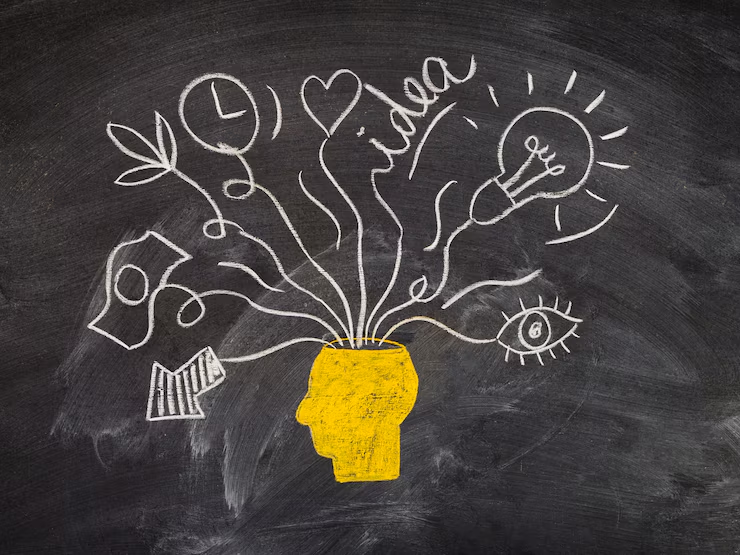Growth Mindset in Education
In an era marked by rapid technological advancements and global interconnectedness, the ability to adapt, learn, and grow has become essential. This adaptability is largely influenced by our mindset, particularly within educational contexts. A growth mindset—a concept popularized by psychologist Carol Dweck—can transform the way students approach learning and challenges. In contrast, a fixed mindset can limit potential and hinder academic and personal growth. This article will delve into the concepts of growth and fixed mindsets, explore their impacts on education, and provide comprehensive strategies for fostering a growth mindset in students.
Understanding Mindsets
What is a Growth Mindset?
A growth mindset is the belief that abilities and intelligence can be developed through dedication, hard work, and perseverance. Individuals with a growth mindset see challenges as opportunities to improve and believe that effort is a crucial component of success. This mindset fosters resilience, a love for learning, and an overall positive approach to personal and academic growth.
The Concept of a Fixed Mindset
In contrast, a fixed mindset is the belief that intelligence and abilities are static traits that cannot be changed. People with a fixed mindset often avoid challenges, give up easily, and view effort as futile. They may see failures as a reflection of their inherent limitations rather than as opportunities for growth and learning.
The Impact of Mindsets on Education
Academic Performance
Research shows that students with a growth mindset tend to achieve higher academic success compared to those with a fixed mindset. They are more likely to embrace challenges, persist through difficulties, and learn from feedback. This results in improved performance and a greater willingness to engage with complex material.
Resilience and Persistence
A growth mindset fosters resilience, enabling students to bounce back from setbacks and persist in the face of difficulties. This resilience is crucial for academic success and personal development, as it helps students navigate the inevitable challenges they will encounter throughout their educational journey.
Motivation and Engagement
Students with a growth mindset are generally more motivated and engaged in their learning. They view challenges as opportunities to develop their skills and are more likely to set ambitious goals and work towards them with enthusiasm. This heightened motivation and engagement can lead to a deeper understanding of the material and a more fulfilling educational experience.

Strategies for Fostering a Growth Mindset in Education
1. Emphasize Effort Over Innate Ability
One of the most effective ways to promote a growth mindset is to focus on the value of effort rather than innate talent. Praise students for their hard work, strategies, and persistence, rather than simply acknowledging their intelligence.
Examples:
- Instead of saying, “You’re so smart,” say, “I’m impressed with how much effort you put into this project.”
- Encourage students to set personal goals and celebrate their progress towards achieving them.
Implementation Tips:
- Use specific feedback that highlights the strategies and effort students have demonstrated.
- Create a classroom culture that values and rewards hard work and perseverance.
2. Normalize and Embrace Mistakes
Creating an environment where mistakes are seen as a natural part of the learning process is essential for fostering a growth mindset. When students understand that errors are opportunities for learning, they are more likely to take risks and engage deeply with the material.
Examples:
- Share stories of famous figures who achieved success after multiple failures.
- Encourage students to reflect on their mistakes and discuss what they have learned from them.
Implementation Tips:
- Incorporate regular reflection activities where students analyze their mistakes and identify strategies for improvement.
- Promote a classroom culture where mistakes are openly discussed and viewed as valuable learning experiences.
3. Model a Growth Mindset
Teachers play a crucial role in shaping students’ mindsets. By modeling a growth mindset in their own actions and attitudes, educators can set a powerful example for their students.
Examples:
- Share personal experiences of overcoming challenges and learning from setbacks.
- Demonstrate a positive attitude towards challenges and show enthusiasm for learning new things.
Implementation Tips:
- Use self-disclosure to talk about your own learning experiences and how you’ve approached difficulties.
- Engage in professional development to continually improve your teaching practices and model a commitment to lifelong learning.

4. Set Incremental Goals and Celebrate Progress
Setting small, manageable goals helps students build confidence and stay motivated. Celebrating progress, no matter how incremental, reinforces the value of effort and persistence.
Examples:
- Break larger projects into smaller tasks and help students set achievable milestones.
- Recognize and celebrate students’ progress and achievements regularly.
Implementation Tips:
- Use visual aids, such as goal charts or progress trackers, to help students visualize their progress.
- Provide regular feedback and encouragement to keep students motivated and focused on their goals.
5. Provide Constructive and Actionable Feedback
Feedback is a powerful tool for promoting a growth mindset. Constructive feedback that focuses on specific aspects of performance and provides actionable suggestions for improvement can help students understand how to enhance their skills.
Examples:
- Instead of saying, “Good job,” provide detailed feedback on what the student did well and how they can improve further.
- Offer suggestions for additional practice or resources that can help students develop their skills.
Implementation Tips:
- Use a feedback framework that includes clear, actionable recommendations and encourages students to set personal goals based on the feedback.
- Provide opportunities for students to ask questions and seek clarification on their performance.
6. Foster a Collaborative Learning Environment
Collaborative learning encourages students to work together, share ideas, and support each other’s growth. This approach can help students develop a growth mindset by emphasizing the value of collective effort and learning from peers.
Examples:
- Implement group projects and activities that require students to collaborate and learn from each other.
- Create opportunities for peer feedback and group discussions.
Implementation Tips:
- Design collaborative activities that promote teamwork and communication.
- Encourage students to provide constructive feedback to their peers and reflect on their own contributions to group efforts.
7. Encourage a Love for Learning
Cultivating a love for learning is central to developing a growth mindset. When students are genuinely interested in the material and enjoy the learning process, they are more likely to embrace challenges and persist through difficulties.
Examples:
- Offer a variety of learning experiences and resources to cater to different interests and learning styles.
- Encourage students to pursue their passions and explore topics beyond the standard curriculum.
Implementation Tips:
- Integrate engaging and hands-on activities into your lessons to spark students’ curiosity and enthusiasm.
- Provide opportunities for students to explore topics of personal interest and share their findings with the class.
8. Create a Supportive and Inclusive Classroom Environment
A supportive and inclusive classroom environment helps students feel safe and valued, which is essential for developing a growth mindset. When students feel supported by their peers and teachers, they are more likely to take risks and engage in their learning.
Examples:
- Implement classroom practices that promote respect, empathy, and collaboration.
- Provide additional support and resources for students who may need extra help.
Implementation Tips:
- Develop classroom norms and agreements that emphasize respect and support for one another.
- Use inclusive teaching practices that accommodate diverse learning needs and perspectives.
Case Studies and Research
Case Study 1: The Impact of Growth Mindset Interventions
A study conducted by researchers at Stanford University investigated the effects of growth mindset interventions on students’ academic performance. The study found that students who participated in growth mindset programs showed significant improvements in their grades and overall academic achievement compared to those who did not receive the intervention.
Case Study 2: Growth Mindset in Early Education
Another study explored the implementation of growth mindset principles in early childhood education. The results indicated that young children who were encouraged to embrace challenges and view mistakes as learning opportunities demonstrated increased resilience, curiosity, and academic success.
Research Findings
Research consistently supports the benefits of a growth mindset in education. Studies have shown that students with a growth mindset are more likely to exhibit higher levels of motivation, persistence, and academic achievement. Additionally, growth mindset interventions have been found to have a positive impact on students’ attitudes towards learning and their overall educational experience.
Conclusion
The importance of a growth mindset in education cannot be overstated. By fostering a growth mindset, educators can help students develop resilience, motivation, and a love for learning that will serve them throughout their academic and personal lives. Through strategies such as emphasizing effort, embracing mistakes, modeling a growth mindset, setting incremental goals, providing constructive feedback, fostering collaboration, encouraging a love for learning, and creating a supportive environment, educators can create a culture of growth and success in their classrooms.
As we navigate an increasingly complex and dynamic world, equipping students with the tools to adapt, learn, and grow is more crucial than ever. By promoting a growth mindset, we can empower students to reach their full potential and thrive in all areas of their lives.
Growth Mindset in Education Growth Mindset in Education Growth Mindset in Education Growth Mindset in Education Growth Mindset in Education Growth Mindset in Education Growth Mindset in Education Growth Mindset in Education Growth Mindset in Education Growth Mindset in Education Growth Mindset in Education Growth Mindset in Education Growth Mindset in Education
Effective Study Techniques for High School Students










No Comment! Be the first one.